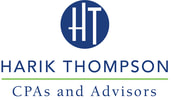|
In your fight against fraud, your own internal practices are your first line of defense. Consider budgets. Budgets can provide insight into how management expects a company to perform in the near future. Sharing information provides an informal fraud screen to manipulating financial results. Creating budgets may require input from multiple department heads. Would-be thieves may be deterred knowing that managers and coworkers in other departments are paying attention to what they're doing.
Once the budget is finalized, you'll want to pore over variances to find causes for differences between the actual and budgeted performance. Let's say actual wages significantly exceeded budgeted wages. The difference may be due to wage increases, productivity declines, greater downtime, unexpected demand for the firm's goods or services, or a combination. But has someone added a nonexistent employee to the payroll? How about analyzing variances? Yes, this can lead to fraud detection — paying attention to variances related to inventory and purchase pricing. If you find differences between actual and budgeted pricing for supplies, what could be happening?
Inventory variances like these raise red flags. But what about the reverse? What if you find an unanticipated price jump for a critical component that you'd expect to lead to a purchase price variance? If there isn't any difference found, you may be experiencing financial reporting fraud. You should also look at "contribution margin," which is the difference between a unit's sale price and its variable costs. It's often used to make pricing decisions: Calculate breakeven point and then evaluate profitability. Contribution margin analysis can detect fraud schemes — skimming or inventory theft. The key lies in a contribution income statement: A profit and loss statement initially computes a gross margin — revenues less variable and fixed manufacturing costs. A contribution income statement calculates contribution margin — revenues less variable manufacturing and non-manufacturing costs. The contribution margin as a percentage of revenue should remain fairly consistent over time. Ah, but what if it's dramatically lower than usual? Could fraud be to blame? Maybe an employee is understating revenue to hide skimming. The margin falls because the variable costs are related to the actual sales, not to falsely lower sales. The points made here are to be used as indicators. If you suspect fraud, 'it's the time to call in a forensic accounting specialist to gather evidence. Comments are closed.
|
Newsletter articles are posted every 2 weeks. If you would like to have our e-newsletter delivered directly to your inbox, please sign up. Your information is confidential; you can unsubscribe at any time. Subscribe. Categories
All
|
Proudly powered by Weebly

 RSS Feed
RSS Feed